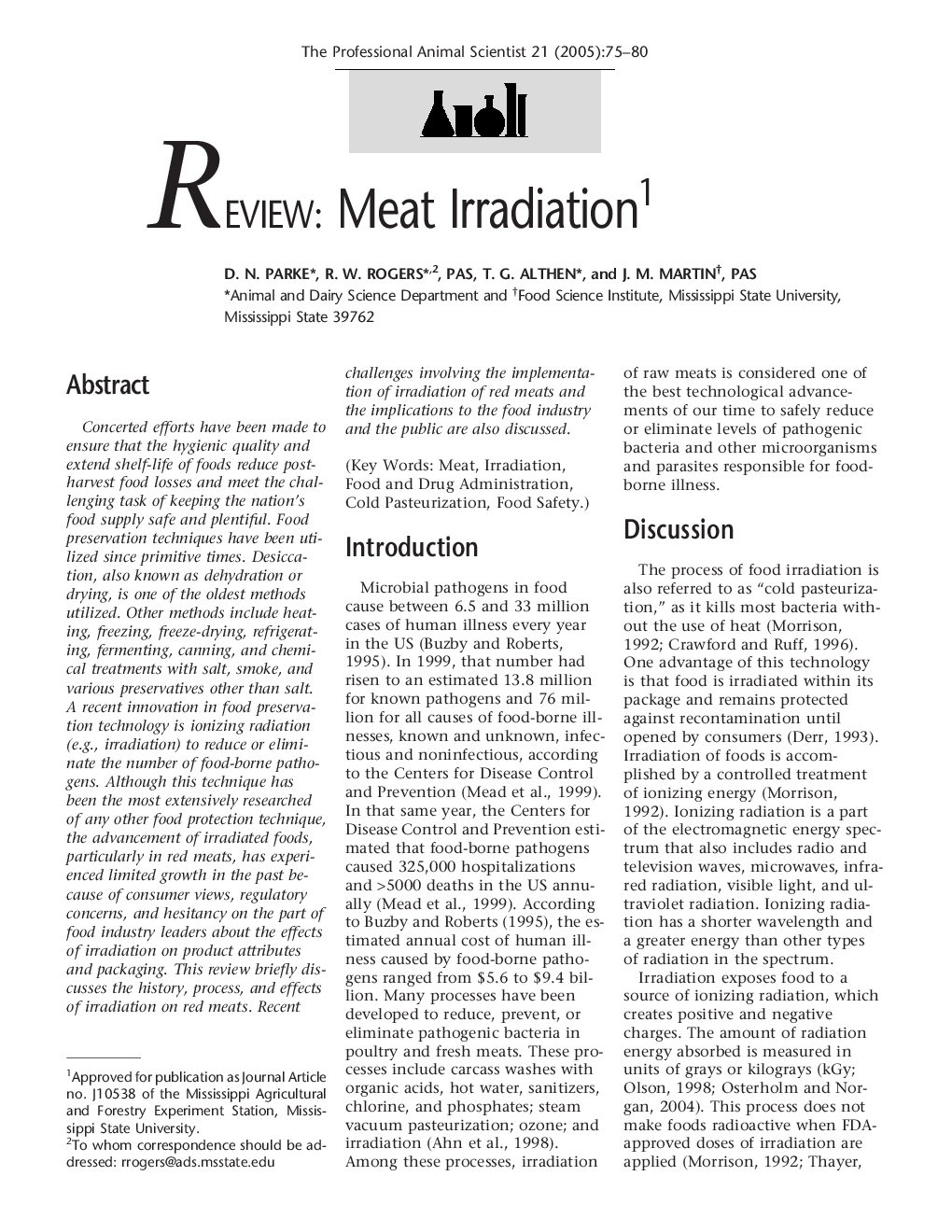| Article ID | Journal | Published Year | Pages | File Type |
|---|---|---|---|---|
| 8985831 | The Professional Animal Scientist | 2005 | 6 Pages |
Abstract
Concerted efforts have been made to ensure that the hygienic quality and extend shelf-life of foods reduce postharvest food losses and meet the challenging task of keeping the nation's food supply safe and plentiful. Food preservation techniques have been utilized since primitive times. Desiccation, also known as dehydration or drying, is one of the oldest methods utilized. Other methods include heating, freezing, freeze-drying, refrigerating, fermenting, canning, and chemical treatments with salt, smoke, and various preservatives other than salt. A recent innovation in food preservation technology is ionizing radiation (e.g., irradiation) to reduce or eliminate the number of food-borne pathogens. Although this technique has been the most extensively researched of any other food protection technique, the advancement of irradiated foods, particularly in red meats, has experienced limited growth in the past because of consumer views, regulatory concerns, and hesitancy on the part of food industry leaders about the effects of irradiation on product attributes and packaging. This review briefly discusses the history, process, and effects of irradiation on red meats. Recent challenges involving the implementation of irradiation of red meats and the implications to the food industry and the public are also discussed.
Related Topics
Life Sciences
Agricultural and Biological Sciences
Animal Science and Zoology
Authors
D.N. Parke, R.W. (Pas), T.G. Althen, J.M. (Pas),
